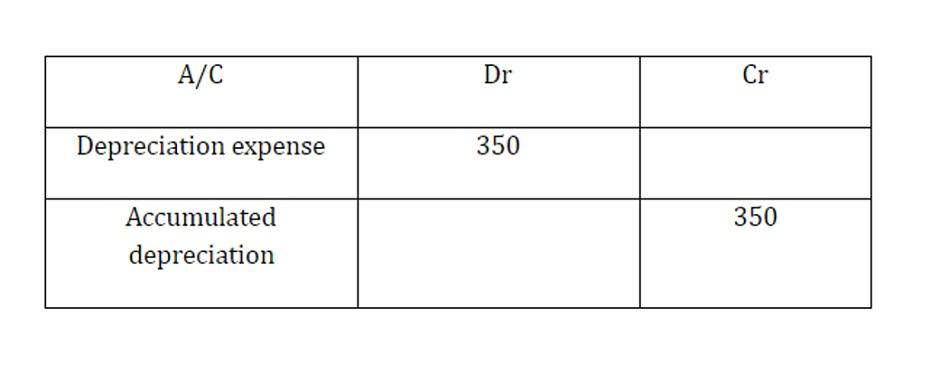
FOB status says who will take responsibility for a shipment from its port of origin to its destination port. It indicates the point at which the title of the goods transfers from the seller to the buyer, and therefore who needs to cover the costs of transit and deal with any issues. However, it also entails drawbacks, including the potential for disputes over transfer points, limited control over the shipping process, and inherent risks of loss or damage during transit. In North America, the term “FOB” is written in a sales agreement to determine when the liability and responsibility for the shipped cargo transfers from the seller to the buyer. When it is indicated as “FOB Origin,” it means that the transfer occurs at the seller’s shipping dock when the goods are safely on board the ship. Also, under FOB shipping point terms, the customer is responsible for the cost of shipping the product.
How confident are you in your long term financial plan?
In this journal entry, the freight out account is an expense account that is charged to the income statement during the period. Alternatively, FOB destination places the delivery responsibility on the seller. The seller maintains ownership of the goods until they are delivered, and once they’re delivered, the buyer assumes ownership. For example, assume Company XYZ in the U.S. buys computers from a supplier in China and signs a FOB destination agreement.
Key Responsibilities Under FOB Shipping Point
The main difference between CIF and FOB is who is responsible for the products in transit. The “and allowed” phrase indicates that the seller adds shipping costs to the invoice, and the buyer agrees to pay, even if the seller manages the shipment. The buyer pays for fob shipping point the shipment, but the seller remains responsible for the goods until delivery. FOB terms influence when buyers and sellers pass FOB shipping point journal entries and record transactions in their ledgers, impacting financial reporting and inventory management.
Clear Allocation of Responsibilities
- The seller pays for the transportation of the goods to the destination, including freight charges and any necessary insurance.
- The concept of FOB destination shipping is important to accounting because according to the accrual method and the matching principle, we record revenues when they are earned.
- In this journal entry, the amount of the debit of the inventory account here is the purchase price of goods (including taxes) plus the transportation cost.
- However, it also entails drawbacks, including the potential for disputes over transfer points, limited control over the shipping process, and inherent risks of loss or damage during transit.
- It indicates the point at which the title of the goods transfers from the seller to the buyer, and therefore who needs to cover the costs of transit and deal with any issues.
The buyer is not responsible for the goods during transit; therefore, the buyer often is not responsible for paying for shipping costs. The buyer is also able to delay ownership until the goods have been delivered to them, allowing them to do an initial inspection prior to physically accepting the goods to note any damages or concerns. In this case, the seller completes the sale in its records once the goods arrive at the receiving dock. The accounting entries are often performed earlier for a FOB shipping point transaction than a FOB destination transaction.

The cost of freight is a critical consideration when choosing between FOB Destination and FOB Origin. With FOB Destination, the seller is responsible for the cost of transportation, which can make it a more expensive option for buyers. With FOB Origin, the buyer assumes the cost of transportation, which can result in lower costs for the seller.


Another shipping is FOB shipping point in which the buyer is the one who is responsible for the goods being transported. In this journal entry, the purchases account is a temporary account that will be cleared at the end of the period when we calculate the cost of goods sold. Likewise, we record this to the purchases account only when the buyer uses the periodic inventory system. In other words, the point of transfer is when the goods arrive at the customer’s destination.
- With FOB Destination, the seller is responsible for the goods until delivery, while with FOB Origin, the buyer assumes responsibility once the goods are loaded onto the vessel.
- FOB involves the seller managing shipping until a specific destination, while EXW (Ex Works) requires the buyer to handle transportation from the seller’s location.
- CIF (Cost, Insurance, and Freight) involves the seller handling both transportation and insurance costs until the goods reach the destination port.
- Like “Freight Prepaid and Allowed,” in this case, the seller pays the initial freight costs and remains responsible for the goods until they reach the buyer.
- FOB, or “free on board,” is a widely recognized shipping rule created by the International Chamber of Commerce (ICC).
- Understanding terms like FOB destination is essential in international trade and shipping.
FOB Freight Collect and Allowed
- If you’re ordering many products from a single seller, you may have more leverage to negotiate FOB destination terms, as the cost of shipping per unit will likely be lower for the seller.
- Likewise, we record this to the purchases account only when the buyer uses the periodic inventory system.
- Typically, the buyer assumes ownership when the goods are loaded onto the shipping carrier arranged by them.
- Before negotiating, make sure you understand the consequences of using FOB shipping point or FOB destination for your purchase—in terms of costs, risks, and responsibilities.
